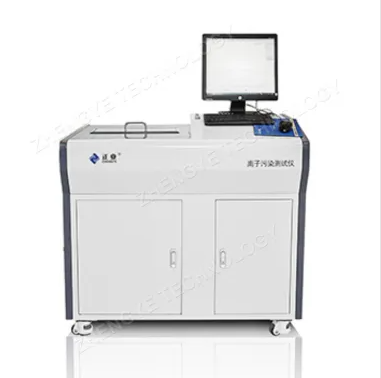How do you test for ionic contamination?
In the realm of electronics manufacturing, ensuring the cleanliness and reliability of components is paramount. Ionic contamination, often stemming from residues left during the manufacturing process, can compromise the functionality and longevity of electronic devices.
1. Understanding Ionic Contamination:
1.1 Source and Impact:
Ionic contamination in electronic assemblies typically arises from residues left behind by fluxes, soldering materials, or cleaning agents. If not adequately removed, these residues can lead to the presence of ions, affecting the conductivity and reliability of the assembly.
1.2 Effects on Electronics:
Ionic contamination can cause various issues, including diminished insulation resistance, electrochemical migration, and dendritic growth. These problems may result in electrical shorts, reduced reliability, and even catastrophic failure of electronic components.
2. Testing Methods:
2.1 Dynamic Ionic Contamination Testing:
Dynamic Ionic Contamination Testers, also known as cleanliness testers, employ a process called dynamic extraction. In this method, a solution is applied to the electronic assembly, and the ions present are extracted by a controlled flow of the solution. The concentration of ions is then measured, providing a quantitative assessment of the contamination level.
2.2 Static Ionic Contamination Testing:
Static Ionic Contamination Testers, on the other hand, utilize a method known as static extraction. This involves immersing the electronic assembly in a solution without inducing any flow. The assembly remains stationary, allowing the solution to absorb ions. The concentration of extracted ions is subsequently measured for assessment.
3. Procedure for Dynamic Ionic Contamination Testing:
3.1 Sample Preparation:
Electronic assemblies are cleaned and prepared for testing. Any residues that might contribute to ionic contamination are minimized to obtain accurate results.
3.2 Application of Extractive Solution:
A specific extractive solution is applied to the assembly. This solution is designed to efficiently extract ionic contaminants from the surface of the components.
3.3 Dynamic Flow:
The Dynamic Ionic Contamination Tester initiates a controlled flow of the extractive solution over the assembly. This process ensures effective extraction of ions from the surface.
3.4 Measurement and Analysis:
The concentration of ions in the solution is measured and analyzed. The results provide quantitative data on the level of ionic contamination present on the electronic assembly.
4. Procedure for Static Ionic Contamination Testing:
4.1 Immersion in Extractive Solution:
The electronic assembly is immersed in the extractive solution without inducing any flow. This allows the solution to passively absorb ionic contaminants from the assembly's surface.
4.2 Absorption Period:
The assembly remains stationary in the solution for a predetermined period, allowing sufficient time for the extractive solution to absorb ions.
4.3 Measurement and Analysis:
Similar to dynamic testing, the concentration of ions in the solution is measured and analyzed. The results offer insights into the extent of ionic contamination.
5. Interpretation of Results:
5.1 Acceptance Criteria:
The results obtained from Dynamic and Static Ionic Contamination Testing are compared against established acceptance criteria. These criteria define the permissible level of ionic contamination that ensures the reliability of electronic assemblies.
5.2 Risk Mitigation:
If the contamination level exceeds acceptable limits, manufacturers can take corrective actions, such as adjusting the cleaning process or selecting alternative materials, to mitigate the risk of ionic contamination.
Dynamic and Static Ionic Contamination Testers serve as invaluable tools in the electronics manufacturing industry, offering precise methods for assessing and mitigating the risks associated with ionic contamination. By implementing these testing procedures, manufacturers can uphold the quality and reliability of electronic assemblies, ensuring that the devices we rely on daily function optimally and endure the test of time.
- Previous: None
- Next: Are Optical Domes Scratch-Resistant?



